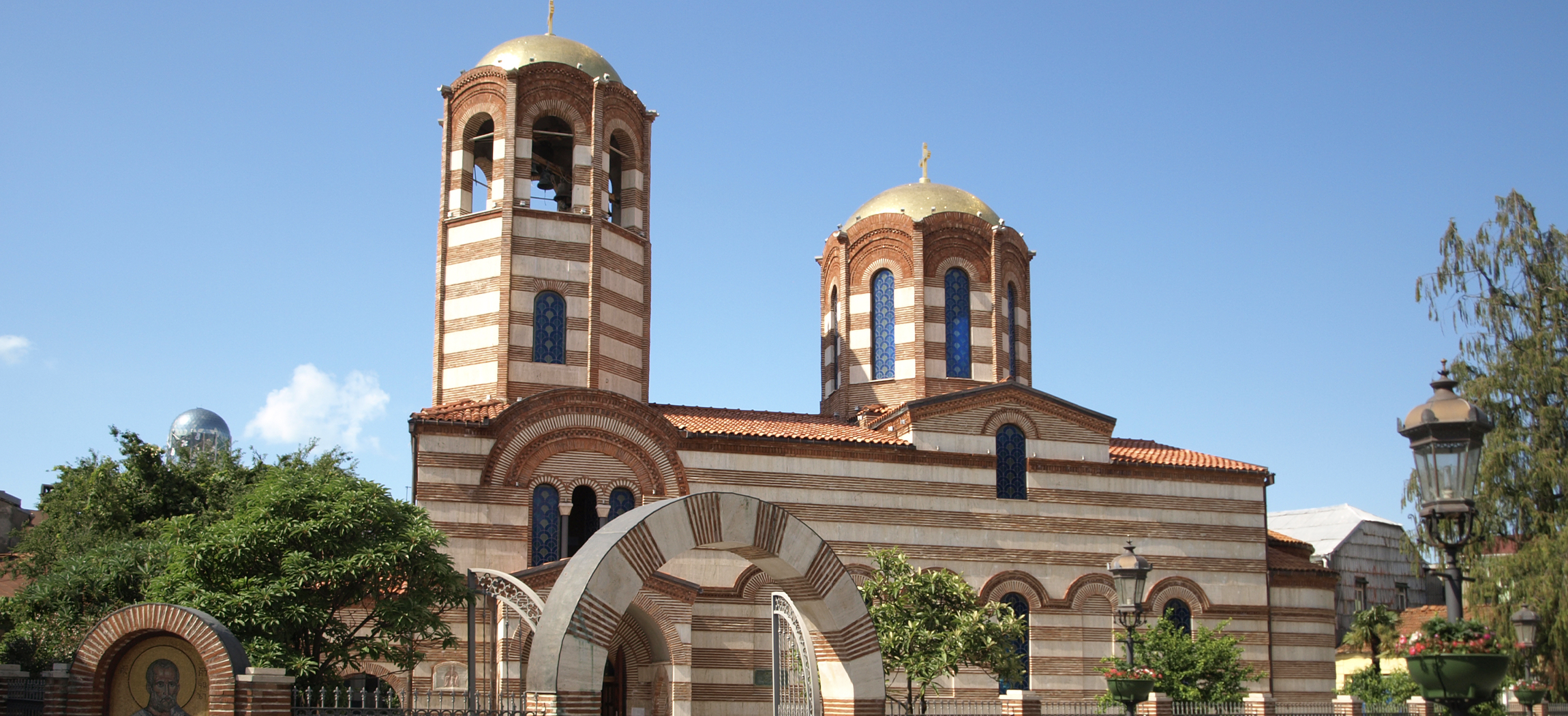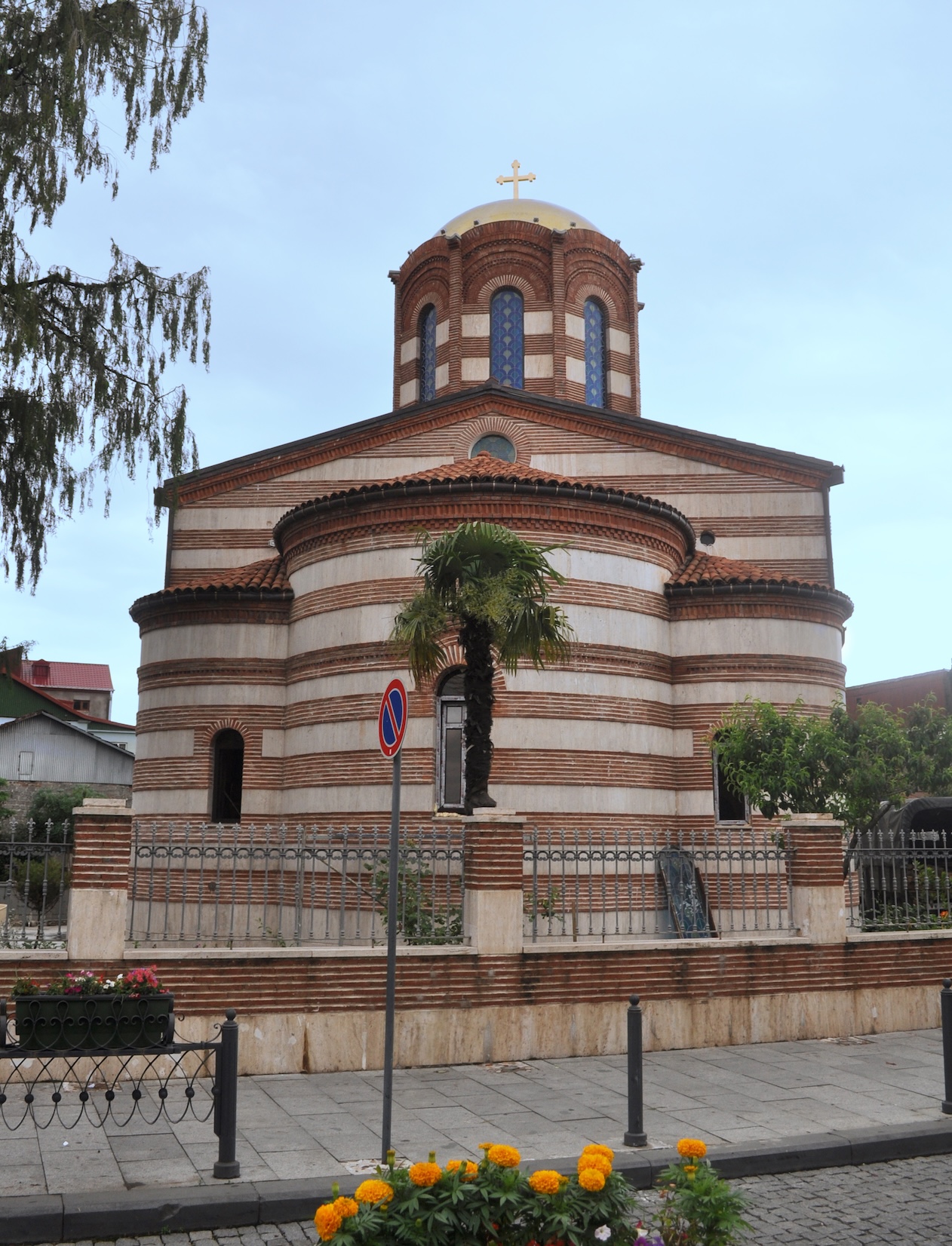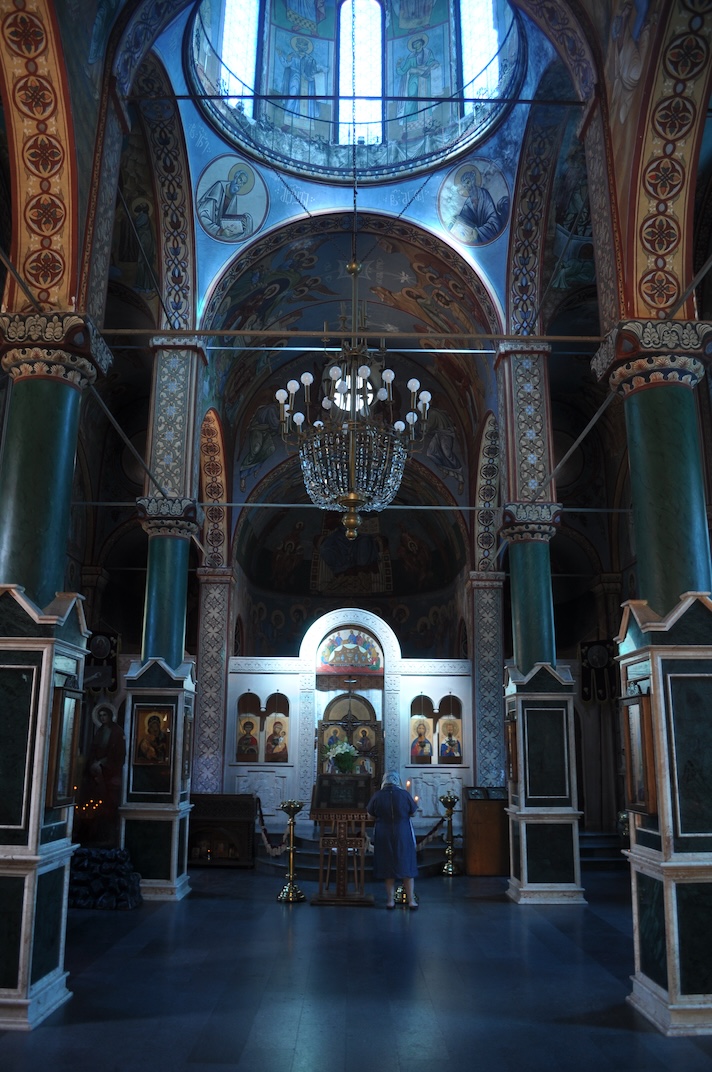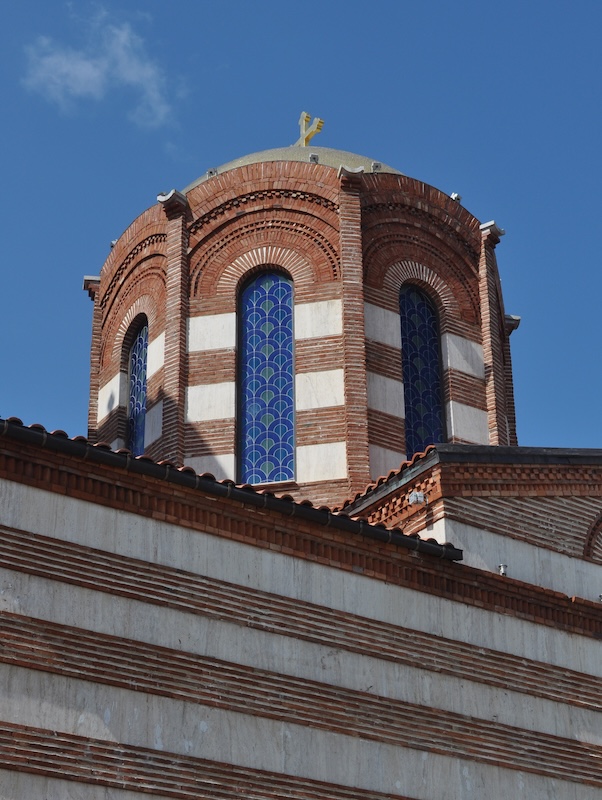
Feel free to add tags, names, dates or anything you are looking for


Batumi, Georgia’s maritime gateway, boasts a long and rich history. In the Late Middle Ages, the city fell under Turkish control, and became part of the Ottoman Empire, a status it retained until 1878, when it was taken over by the Russian Empire. During the final years of Ottoman rule, Batumi was home to a diverse, multiethnic population, including a sizeable Orthodox Christian community that was primarily made up of Greeks. Between 1865 and 1871, this community built a church in their neighbourhood that was dedicated to St Nicholas, located at the present-day intersection of King Parnavaz and Zviad Gamsakhurdia streets.
Church of St Nicholas, viewed from the south-east
The church was built in the tradition of post-Byzantine architecture from the Pontus region (the southeastern coast of the Black Sea). It is a cross-domed structure with three projecting apses in the east. The dome is supported by four columns. Two entrances—one from the west and the other from the south—lead into the interior of the church.

Church of St Nicholas, viewed from the east
In the 1890s, the church was extended westwards, and a bell tower was added above the newly expanded western section. The dome of the church was also reconstructed, resulting in a tall, octagonal shaped drum. Small, open porches were built in front of both entrances.

Interior, facing east
Initially, the façades were faced with stone and were whitewashed, but in 2009, the church underwent renovation, which significantly altered its outer look: the walls were partly faced with brick, giving the façades a striped appearance, with alternating bands of white stone and red brick. The original pyramidal design of the domes on both the church and the bell tower was replaced with a hemispherical shape.

The dome
A stone featuring a sculptural image of St Nicholas is embedded in the southern façade, near its western edge. A Greek inscription, carved on either side of the saint’s image, includes the date of the church’s construction.
Sculptural image of St Nicholas
Today, the church has a small, fenced courtyard, where a bronze bell is displayed, inscribed in Latin with voco vivos plango mortuos—"I call the living, I mourn the dead." The bell was cast in Warsaw in 1902 and donated to the Church of St Nicholas.
Bronze bell in the courtyard
The church, which was closed in the 1930s, was reopened in the late Soviet period and remains in use today.